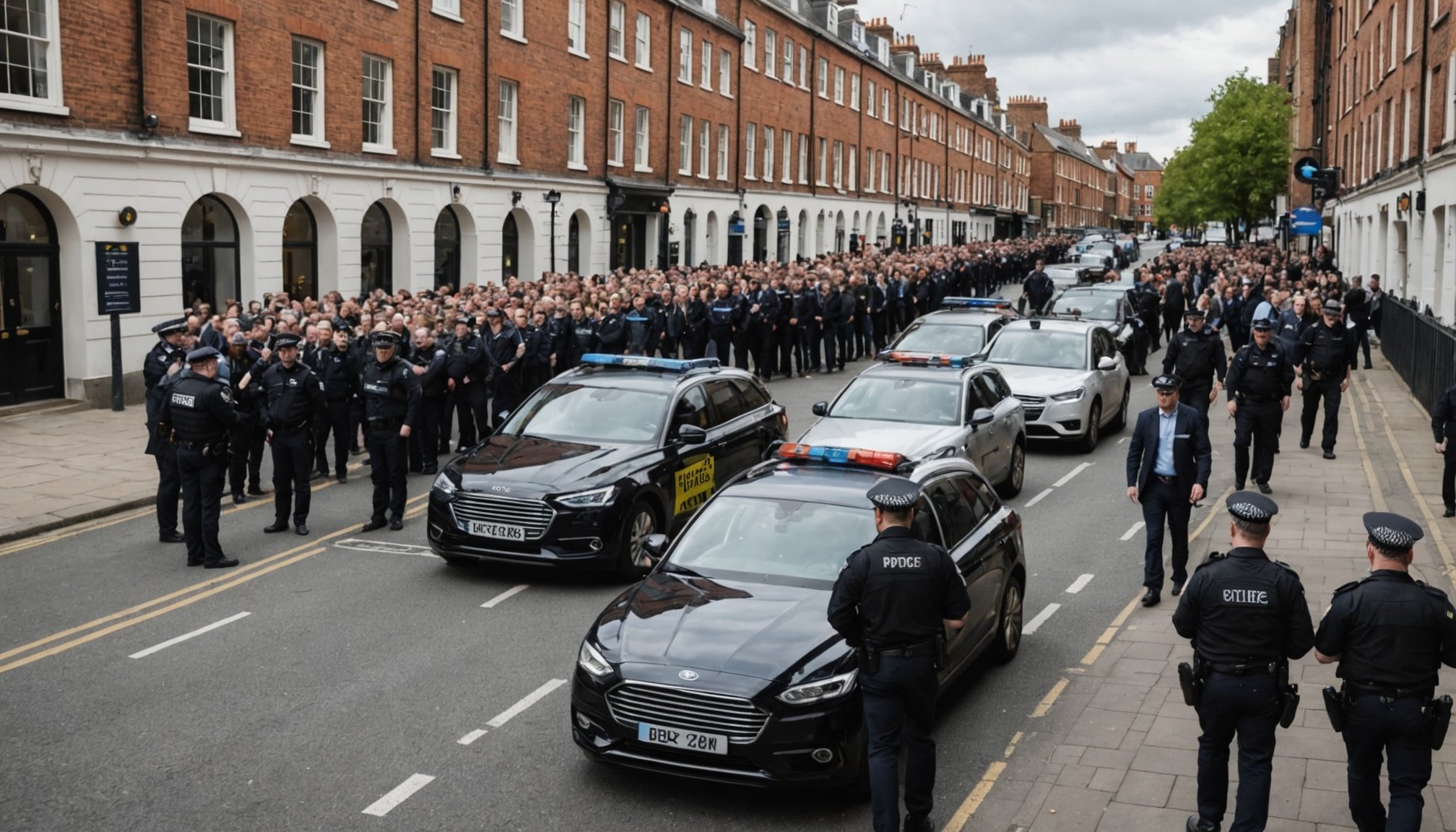Unveiling the Impact of AI Innovations on Predictive Policing in the UK
The Evolution of Predictive Policing
Predictive policing, a concept that has been gaining traction globally, is revolutionizing the way law enforcement agencies approach crime prevention and detection. In the UK, the integration of artificial intelligence (AI) and machine learning (ML) has been a pivotal factor in this evolution.
AI technologies, such as deep learning and neural networks, are capable of processing vast datasets at incredible speeds, uncovering patterns that might be invisible to human analysts. For instance, predictive policing models in the UK are used to track potential terror threats and gang activities by analyzing historical crime data and real-time feeds. This approach allows police forces to make informed decisions about where and when crimes are likely to occur, enhancing public safety significantly[1].
Topic to read : Find your dream luxury home with real estate agency les gets
Applications of Predictive Policing
The applications of predictive analytics in policing extend far beyond identifying potential crime hotspots. Here are some key areas where AI is making a significant impact:
-
Crime Hotspot Identification: In cities like Durham, England, predictive policing systems like the Harm Assessment Risk Tool (HART) classify individuals based on their likelihood of committing another offense. This tool uses data gathered over several years to assess factors such as the severity of the current crime, criminal history, and flight risk[3].
Additional reading : Unveiling cutting-edge sustainable consumer electronics trends in the uk
-
Real-Time Data Analysis: Predictive models process real-time data feeds to improve predictions dynamically. For example, in Delhi and Mumbai, AI-based systems provide police officers with daily forecasts and maps marking potential crime zones, helping them optimize their patrolling strategies[1].
-
Mobility and Surveillance: AI-enabled technologies such as autonomous vehicles, drones, and smart sensors are being used to enhance mobility and surveillance. For instance, GPS projectiles can be used to track suspects without engaging in high-speed chases, and smart sensors can track the use of police guns to provide valuable evidence in trials[3].
Benefits and Challenges
The use of AI in predictive policing offers several benefits but also raises important challenges.
Benefits
-
Improved Performance: AI can significantly improve the performance of police forces by preventing and detecting crime more effectively. For example, the use of Facial Recognition Technology (FRT) can speed up the identification of criminals, and predictive policing can reduce crime rates, as seen in the 17% reduction in burglary rates in Los Angeles[2].
-
Efficiency and Transparency: AI can free up police time for higher priority work and improve transparency and accountability. Body-worn cameras, for instance, can provide another set of eyes to review interactions and prevent unacceptable behavior[2].
-
Enhanced Public Engagement: AI-powered chatbots can help improve communication between the public and the police, especially for people with disabilities or those who do not speak English as their first language[2].
Challenges
-
Ethical and Human Rights Concerns: The use of AI in policing raises significant ethical and human rights concerns. For example, facial recognition technology has been criticized for its intrusiveness and potential to exacerbate discrimination. A study found that live FRT had lower accuracy for people aged under 20 and for Black subjects, highlighting the need for careful oversight and accountability[2].
-
Data Protection and Privacy: The processing of personal data by AI tools is subject to strict compliance requirements under data protection laws. Ensuring GDPR compliance is crucial to avoid data breaches and protect individual rights[5].
-
Validity and Accuracy: There are concerns about the validity and accuracy of AI technologies. For instance, predictive models can be biased if they are trained on flawed data, leading to unfair outcomes. The need for constant refinement and validation of these models is paramount[2].
Future Developments
As technology continues to advance, the role of AI in law enforcement is expected to grow.
Integration of New Data Sources
Future predictive policing models are likely to incorporate more real-time data sources, including social media monitoring, satellite imagery, and Internet of Things (IoT) devices like smart city sensors. This integration will enhance the precision of predictions and allow for more dynamic decision-making[1].
Robotic and IoT Innovations
Robotic officers, like those being introduced in Dubai, are set to play a larger role in policing. These robots can help deter crime, relieve human officers of routine tasks, and provide real-time surveillance. IoT devices will also become more prevalent, providing a wealth of data that can be analyzed to prevent and detect crimes[3].
Addressing Ethical and Regulatory Challenges
To fully leverage the potential of AI in predictive policing, it is essential to address the ethical and regulatory challenges.
Ensuring Oversight and Regulation
Governments must ensure that mechanisms for oversight and regulation are in place and evolve to keep pace with technological innovation. This includes setting clear guidelines for the use of AI, ensuring data protection, and safeguarding human rights[2].
Data Ethics and Transparency
Transparency in the use of AI is crucial for maintaining public trust. Police forces must be open about how AI is used, the data it processes, and the decisions it influences. Ensuring that AI systems are explainable and not “black boxes” is vital for accountability and trust[2].
Practical Insights and Actionable Advice
For law enforcement agencies looking to implement AI-driven predictive policing, here are some practical insights and actionable advice:
-
Invest in Data Quality: The accuracy of predictive models depends heavily on the quality of the data they are trained on. Ensuring that data is comprehensive, accurate, and free from bias is essential[1].
-
Implement Robust Oversight: Establishing robust oversight mechanisms can help mitigate ethical and human rights concerns. This includes regular audits, transparency in decision-making processes, and clear guidelines for the use of AI[2].
-
Engage with the Public: Public trust is crucial for the success of AI in policing. Engaging with the community, explaining how AI is used, and addressing concerns can help build trust and ensure that AI is used in a way that respects human rights[2].
The integration of AI in predictive policing in the UK is a transformative development that holds great promise for enhancing public safety and improving law enforcement practices. However, it also presents significant challenges that must be addressed through careful regulation, transparency, and a commitment to ethical standards.
As we move forward, it is clear that AI will continue to play a central role in policing. By leveraging these technologies responsibly and ensuring that they are aligned with human rights and ethical principles, we can create a safer, more just society for all.
Detailed Bullet Point List: Key Applications of AI in Predictive Policing
-
Crime Hotspot Identification:
-
Analyze historical crime data to identify patterns and trends.
-
Use real-time data feeds to update predictions dynamically.
-
Provide police officers with daily forecasts and maps marking potential crime zones.
-
Mobility and Surveillance:
-
Use autonomous vehicles and drones for surveillance.
-
Employ GPS projectiles to track suspects without high-speed chases.
-
Utilize smart sensors to track the use of police guns.
-
Facial Recognition Technology:
-
Identify criminals quickly and accurately.
-
Monitor public spaces for wanted individuals.
-
Ensure accountability through transparent use of FRT.
-
Public Engagement:
-
Use AI-powered chatbots for 24/7 support.
-
Improve communication for people with disabilities or non-English speakers.
-
Enhance transparency through body-worn cameras.
-
Data Analysis:
-
Process vast datasets to uncover hidden patterns.
-
Analyze social media, satellite imagery, and IoT data.
-
Ensure data quality and avoid bias in predictive models.
Comprehensive Table: Comparison of AI Technologies in Predictive Policing
| Technology | Application | Benefits | Challenges |
|---|---|---|---|
| Deep Learning | Crime hotspot identification, real-time data analysis | High accuracy, dynamic predictions | Requires large datasets, potential bias |
| Facial Recognition Technology (FRT) | Identifying criminals, monitoring public spaces | Quick identification, enhanced surveillance | Ethical concerns, accuracy issues for certain demographics |
| Internet of Things (IoT) | Real-time data collection, smart city sensors | Enhanced precision, dynamic decision-making | Data protection concerns, potential for bias |
| Autonomous Vehicles and Drones | Surveillance, tracking suspects | Reduced risk of high-speed chases, enhanced mobility | Ethical concerns, regulatory challenges |
| Smart Sensors | Tracking police gun use, providing evidence | Enhanced accountability, valuable evidence | Privacy concerns, potential for misuse |
Relevant Quotes
- “The availability of large datasets, enhanced computational power, and sophisticated algorithms have created unprecedented opportunities for police departments to make informed predictions about crime.”[1]
- “The use of AI in policing raises significant ethical and human rights concerns. For example, facial recognition technology has been criticized for its intrusiveness and potential to exacerbate discrimination.”[2]
- “Ensuring that AI systems are explainable and not ‘black boxes’ is vital for accountability and trust.”[2]
- “By integrating insights from criminology and data science, predictive models become more refined and accurate, enhancing the ability of law enforcement agencies to predict criminal activity and take pre-emptive actions.”[1]











